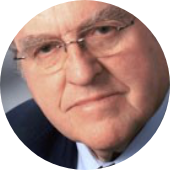Neurological motor disorder
Hyperbaric oxygen therapy together with neuro-rehabilitation is a unique concept, one of its kind in Europe.
Patients with cerebral palsy, traumatic brain injury, or after a stroke may in addition to the proven concept of space medicine therapy resort to hyperbaric oxygenation.
In the hyperbaric oxygenation (HBO therapy, the body receives oxygen under heightened pressure. In the hyperbaric chamber “the body awakens with the help of breathing .” The so-called. sleeping neurons in the central nervous system are activated. Brain ability (capacity) to learn increases. Motoric system becomes more “apt to learn” can withstand a higher load. Followed by training new information can be better “anchored” in the brain. Thus, the central nervous system learns proper movement patterns.

Univ.Prof.hcmult.Dr.Dr. Franz Gerstenbrand of Karl Landsteiner Institute, specialist in space medicine therapy, along with medical personnel from the Adeli Centers created a new concept of therapy: ,, The concept comes from the US, where proprioception in combination with hyperbaric oxygenation has already been proved successful and were studies in which I participate were published. It is in neurorehabilitation in combination with innovative therapies, that we might expect improvements. Adeli center pioneered in the unique combination of these methods in rehabilitation of patients with central nervous system injuries, in Europe.”
HBOT and neurological diseases
HBOT and neurological diseases
in neurological disease HBOT improves cerebral microcirculation and cerebral metabolism, reduces brain edema, increases permeability of the blood-brain membrane and sustains the activity of partially damaged tissue. At the same time preventively effects progression of brain lesions from secondary influences.
In infant’s cerebral palsy
HBOT reduces spasticity, visual, hearing and speech impairment. Although improvements are individual, use of a combination of HBOT, rehabilitation and other supplemental methods may cause significant improvements in health.
In cerebrovascular disease
Improvements of 40-100% is suggested. Significant reduction of spasticity in improvements in function of neurons are noted in the affected areas of the brain and rise of the partial pressure of oxygen in hypoxic muscle occurs. Furthermore, mental and cognitive performance increases.
In spinal cord injury
there is evidence that HBOT administered in the first 4 hours after injury reduces damage to the spine and improves subsequent rehabilitation.
In neurological diseases
HBOT improves cerebral microcirculation and brain metabolism, reduces brain edema, increases permeability of the blood brain membrane, and maintains the full activity of damaged tissues. At the same time preventively effects progression of brain lesions from secondary influences.
In infants’ cerebral palsy
HBOT reduces spasticity, visual, hearing and speech impairment. Although improvements are individual, use of a combination of HBOT, rehabilitation and other supplemental methods may cause significant improvements in health.

